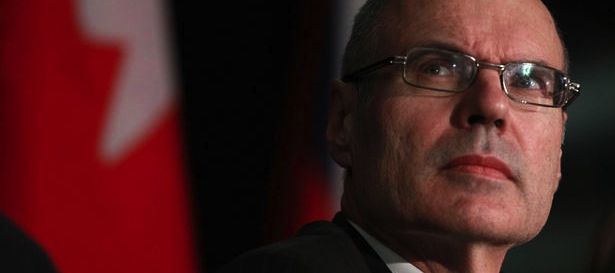
Making the Grade on Carbon Pricing and the Economy
As Economics 101 students gear up for their final exams, Canadian policy makers are working to pass a real-life economics test. Their challenge: how to reconcile both environmental and economic imperatives, particularly in the face of rising greenhouse gas emissions. Here’s one question a number of those decision-makers are puzzling:
The economic impact of putting a price on carbon emissions is
a) positive
b) negative
c) it depends
The answer: C. When it comes to the potential impacts of any policy, “it depends” is almost always right. And that is certainly the case when it comes to understanding the economic impacts of pricing carbon. Whether achieved through a carbon tax, cap-and-trade or a hybrid system, the economic results of pricing carbon depend, among other things, on: the design; the use of revenues generated; and policies in competing economies.
Here is perhaps a better question:
Which of the statements below is true?
- Pricing carbon need not have a significant negative impact on an economy.
- Pricing carbon could have a positive economic impact.
- All of the above
Again, C is correct. But getting to that answer means contemplating how an economy without a carbon price would trend against an economy with a carbon price. Some key factors worth considering:
- Climate change is costly. Carbon emissions will raise global temperatures and that will have economic costs: crop damage, higher agricultural prices, loss of forests and property damage from flooding (to name a few). To the degree these costs are mitigated, carbon pricing can show positive economic effects. That scope is increased if we examine well-being or “welfare” because there would be additional benefits of lowering emissions such as cleaner air (better for us, and our healthcare budget).
- Carbon pricing is more cost-effective than regulation. Some form of substantial policy change will be required in Canada to achieve the stated goal of reducing carbon emissions. If we start from the premise that some policy action will be taken to reduce emissions beyond the status quo (which will not come close to achieving targets) then carbon pricing would again show positive economic benefits. There is almost universal agreement that pricing carbon achieves emissions reductions at a lower cost than regulation.
- Carbon pricing generates revenue. Let’s not dodge the fact that carbon pricing on its own could definitely be negative to an economy. By raising the costs of anything with carbon, real wages would effectively be lowered and the cost of new capital raised, thereby yielding less labour and less capital to an economy and hence less output. But this analysis ignores the fact that pricing carbon produces revenues that can be used to offset negative impacts. That could include protecting the most vulnerable industries, reducing capital taxes to encourage new, lower carbon-intensity capital, or to cut personal income taxes, thereby yielding a positive effect to the supply of labour. If revenues are recycled through such mechanisms, then a carbon price is mostly a matter of redistributing economic flows away from carbon. Even keeping some of the revenues for debt reduction could yield positive economic benefits.
- Experience bears out theory. Pricing carbon is common in Europe and while we think of Europe as suffering economically of late, the Northern European economies have for the most part remained strong and that is where carbon pricing has its deepest roots, having been implemented in Finland, Netherlands, Norway, Sweden and Denmark in the early 1990s. Several analyses of the economic impact of carbon pricing in Europe suggest that the net economic impact has been small. British Columbia introduced carbon pricing in 2008. B.C.’s consumption of carbon has been reduced relative to other provinces while its economic performance has been similar to its peers. Here too it appears that carbon pricing did not have a major economic impact, even though competing jurisdictions did not put a significant price on carbon.
So what’s the take-away lesson? For policy-makers, passing one of the most important tests of the 21st century—addressing climate change—is about asking the right questions. It is not: can it be done without harming the economy? But rather: how can it be done without harming the economy? Done right and designed properly, carbon pricing is a critical part of the answer.
About the Author
Don Drummond is an Adjunct Professor at Queens University in the School of Policy Studies, as well as a Commissioner of Canada’s Ecofiscal Commission. He was formerly Senior Vice President & Chief Economist at TD Bank and Associate Deputy Minister at Finance Canada.




Comments are closed.